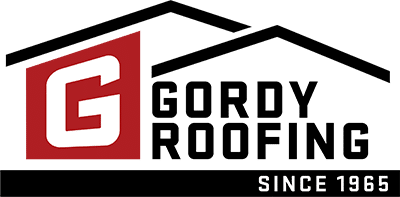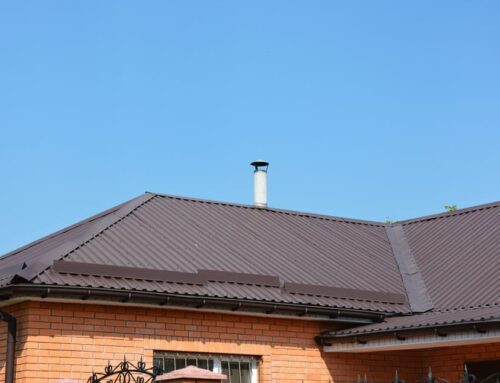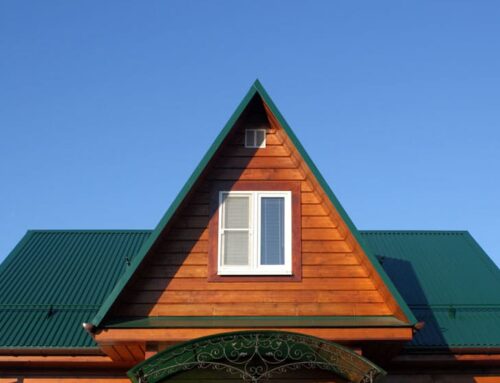How Metal Roofing Systems Reduce Urban Heat Island Effect

Understanding the Urban Heat Island Effect and its Impact on Cities
The Urban Heat Island (UHI) effect is where urban areas experience higher temperatures than surrounding rural areas. This is due to a combination of factors, including the concentration of buildings, roads, and other infrastructure that absorb and retain heat. The UHI effect can significantly impact cities, including increased energy consumption for cooling towers, reduced air quality, and adverse health effects on residents.
One major contributor to the UHI effect is using dark-colored roofing materials in urban areas. These materials absorb more solar radiation than lighter-colored roofs, leading to higher surface and overall city temperatures. Additionally, traditional roofing materials like asphalt shingles or tar paper do not reflect much sunlight into the atmosphere.
Many cities are implementing cool roof technology to combat this issue to reduce heat absorption from buildings. Cool roofs are designed with reflective surfaces that reflect sunlight into space rather than absorbing it as heat. This helps lower surface temperatures on individual buildings and entire neighborhoods or city blocks.
The Advantages of Cool Roof Technology for Buildings and the Environment
Cool roof technology effectively reduces the impact of urban heat islands on buildings and the environment. By reflecting a significant amount of sunlight, cool roofs can lower surface temperatures by up to 50 degrees Fahrenheit, reducing the need for air conditioning and lowering energy costs. This makes them particularly useful in hot climates or during summer months.
In addition to their energy-saving benefits, cool roofs also help mitigate the effects of climate change. Traditional dark-colored roofs absorb heat and contribute to rising temperatures in urban areas, which can lead to increased air pollution levels and reduced air quality. Cool roofs offer a more sustainable alternative by reducing greenhouse gas emissions and improving overall environmental conditions.
Cool roofing technology has come a long way over the years, with metal roofing systems being one of the most popular options available today. Metal roofs are known for their durability, longevity, and resistance to weathering factors such as wind damage or corrosion. They are also highly reflective and can be coated with unique pigments that enhance their cooling properties.
How Metal Roofing Systems Work to Reduce Heat Absorption
Metal roofing systems have been gaining popularity recently due to their ability to reduce heat absorption. These roofs reflect sunlight and reduce the amount of heat absorbed into the building. By doing so, they help keep facilities more relaxed, which can reduce energy costs associated with air conditioning.
One way that metal roofing systems reduce heat absorption is through their reflective properties. Metal roofs are often coated with reflective paint or other materials that reflect sunlight into the atmosphere instead of allowing it to be absorbed by the roof. This helps keep buildings cooler and reduces the energy needed for cooling.
Another way that metal roofing systems reduce heat absorption is through their ability to radiate excess heat away from the building. Unlike traditional asphalt shingle roofs, which absorb and retain heat, metal roofs can quickly release any surplus heat into the environment. This means that buildings with metal roofing systems will stay cooler even on hot summer days than those with traditional roofs.
Metal roofing systems offer many benefits beyond reducing heat absorption, including durability and longevity. They also require less maintenance than traditional roofing materials like asphalt shingles or clay tiles. As such, they are becoming an increasingly popular choice for residential and commercial construction projects across urban areas looking for sustainable solutions for their development needs.
Types of Metal Roofing Materials and Their Properties
Metal roofing systems are becoming increasingly popular due to their durability, longevity, and energy efficiency. Several types of metal roofing materials are available in the market, each with unique properties that make them suitable for different applications. The most commonly used metals for roofing include steel, aluminum, copper, and zinc.
Steel is a popular choice for metal roofing due to its strength and affordability. It is available in various thicknesses and can be coated with different finishes to enhance its corrosion resistance. Aluminum is another popular option as it offers excellent corrosion resistance and is lightweight compared to other metals. Copper has been used for centuries as a roofing material for its beauty and durability. It develops a natural patina over time, adding character to the building’s exterior. Zinc also offers similar benefits as copper but at a lower cost.
The properties of these metal roofing materials vary based on factors such as thickness, coating type, finish options etc., making them suitable for different environments and applications. For instance, thicker gauge steel may be more appropriate for areas prone to extreme weather conditions, while lighter gauge aluminum may suffice in milder climates. Additionally, coatings such as galvanized or painted finishes can further enhance the lifespan of these materials by protecting against rust or fading from UV exposure.
Installation Techniques and Considerations for Metal Roofing Systems
Several techniques and considerations need to be considered when installing metal roofing systems. Firstly, the roof must be appropriately prepared before installation can begin. This includes ensuring the surface is clean and free from any debris or contaminants that could affect adhesion.
Next, choosing the right fasteners for your particular metal roofing system is necessary. Different types of metals require other pins, so it’s essential to consult a professional installer who can advise you on the best option for your needs.
Another key consideration when installing metal roofing systems is ventilation. Proper ventilation helps prevent moisture buildup and extends the life of your roof by reducing the risk of rust and corrosion. It also helps regulate the temperature inside your building by allowing hot air to escape through vents in the roof.
Proper installation techniques and considerations ensure a long-lasting and effective metal roofing system. By working with an experienced installer who understands these factors, you can ensure that your new roof will provide reliable protection while also helping reduce heat absorption in urban areas.
Comparing Metal Roofing Systems with Other Cool Roofing Solutions
Metal roofing systems are among the most effective cool roofing solutions available. They have a high solar reflectance, which means they can reflect a significant amount of sunlight and heat away from the building. Additionally, metal roofs have a low thermal emittance, meaning they do not absorb and retain as much heat as other materials. This combination of properties makes them an excellent choice for reducing energy consumption and mitigating the urban heat island effect.
Another popular cool roofing solution is white or light-colored membrane roofing. These materials also have a high solar reflectance but may not be as durable or long-lasting as metal roofs. Additionally, some types of membrane roofs may require more maintenance than metal roofs to maintain their reflective properties over time.
Green roofs are another option for reducing urban heat island effects in cities. These living rooftops consist of vegetation planted on top of waterproof membranes that cover buildings’ structural components. While green roofs can provide insulation benefits and help reduce stormwater runoff, they may not be suitable for all buildings due to weight restrictions and installation requirements.
Overall, while there are several different cool roofing solutions available today, metal roofing systems stand out because of their durability, longevity, and effectiveness at reflecting sunlight and heat away from buildings in urban areas where temperatures tend to rise higher than surrounding rural areas due to increased development density with less natural surfaces such as trees or grasslands that would otherwise absorb some portion of incoming solar radiation during daytime hours when air conditioning use peaks in summer months leading up until sunset when outdoor ambient temperature drops again allowing indoor cooling loads decrease gradually through evening hours without additional energy expenditure beyond what has already been consumed earlier during peak demand periods earlier in day before nightfall arrives naturally without artificial lighting required indoors yet either way
Case Studies: Successful Implementation of Metal Roofing Systems in Urban Areas
One successful implementation of metal roofing systems in urban areas is the renovation of the historic Ford Assembly Plant in Richmond, California. The building was transformed into a LEED-certified office and commercial space with a cool roof made of 100% recycled aluminum. The metal roof reflects up to 70% of solar radiation and reduces cooling costs by up to 20%. Additionally, the use of recycled materials significantly reduced the environmental impact.
Another example is the installation of a standing seam metal roof on top of a high-rise apartment building in downtown Chicago. The cool roof system reduced energy consumption and improved indoor comfort for residents by reducing heat transfer through the ceiling. Furthermore, this roofing system requires minimal maintenance due to its durability and resistance to extreme weather conditions.
In New York City, an industrial warehouse was retrofitted with a metal roofing system that features integrated photovoltaic panels for renewable energy generation. This innovative solution provides sustainable power and contributes towards reducing urban heat island effects by reflecting sunlight away from buildings. Overall, these case studies demonstrate how metal roofing systems can provide numerous benefits for buildings and their surrounding environments in urban areas.
Future Outlook: Promoting Cool Roof Technology for Sustainable Urban Development
The promotion of cool roof technology is crucial for sustainable urban development. As cities grow and expand, the urban heat island effect becomes more prominent, increasing energy consumption and air pollution. Cool roofs can help mitigate these issues by reducing the heat absorbed by buildings and lowering energy demand for cooling.
To promote cool roofs in urban areas, it is important to educate building owners and architects about their benefits. This includes highlighting the cost savings associated with reduced energy consumption and improved indoor comfort levels. Additionally, governments can incentivize the installation of cool roofs through tax credits or rebates.
Looking towards the future, technological advances will likely lead to even more effective cool roofing solutions. For example, research is currently being conducted on reflective coatings that can be applied to existing roofs without replacing them entirely. These innovations will further increase adoption rates and contribute to a more sustainable built environment.
What is the Urban Heat Island Effect?
The Urban Heat Island Effect describes the phenomenon where cities are significantly warmer than surrounding rural areas due to the absorption and retention of heat by buildings, roads, and other infrastructure.
How does the Urban Heat Island Effect impact cities?
The Urban Heat Island Effect can lead to increased energy consumption, higher air pollution levels, and adverse health effects for residents. It can also contribute to climate change by increasing local temperatures.
What is Cool Roof Technology?
Cool Roof Technology refers to roofing materials and techniques designed to reflect sunlight and heat away from buildings, reducing the amount of heat absorption and the resulting energy use and the Urban Heat Island Effect.
What are the advantages of Cool Roof Technology?
Cool Roof Technology can reduce energy consumption, lower utility bills, improve indoor comfort, increase roof lifespan, reduce Urban Heat Island Effect, and promote sustainable urban development.
How do metal roofing systems reduce heat absorption?
Metal roofing systems reflect sunlight and heat away from the building, reducing the heat absorbed by the roof and structure. They can also provide insulation and ventilation to further reduce heat absorption.
What are the types of metal roofing materials and their properties?
Metal roofing materials include aluminum, steel, copper, and zinc. Each has different properties, such as durability, cost, and appearance.
What are some installation techniques and considerations for metal roofing systems?
Installation techniques include choosing the right roofing material, ensuring proper ventilation, and using reflective coatings. Considerations include the pitch of the roof, local weather conditions, and building codes.
How do metal roofing systems compare with other cool roofing solutions?
Metal roofing systems are generally more durable and longer-lasting than other cool roofing solutions, such as white membrane roofs or green roofs. They also have lower maintenance costs.
Are there any case studies on successfully implementing metal roofing systems in urban areas?
There are many case studies on the successful implementation of metal roofing systems in urban areas, including the Chase Center arena in San Francisco and the Telus Garden office tower in Vancouver.
What is the outlook for promoting Cool Roof Technology for sustainable urban development?
The future outlook for promoting Cool Roof Technology is positive, with increasing awareness of the Urban Heat Island Effect and the need for sustainable urban development. Governments and organizations are incentivizing the use of Cool Roof Technology, and more research and development in this field is expected.
About Gordy Roofing Company
Gordy Roofing Company has been the trusted source in East Texas for over 50 years and across the area. We are a family-owned business started by our dad over five decades ago, and we are three brothers that have continued our family tradition and skill set taught to us by our father. We bring this commitment to you and our passion for turning your home into a work of art. We are insured, licensed, and bonded and have become the leading expert in our market segment. Please become part of our roofing family and history.
Gordy Roofing primarily serves customers in East Texas and the surrounding areas, including cities like Longview, Tyler, and Gilmer. They have experience working with various roofing materials, such as asphalt shingles, metal roofs, and flat roofs. Their team of skilled technicians is well-versed in addressing roofing issues like leaks, storm damage, general wear and tear, and full upgrades.
We have locations in the following areas: Big Sandy Texas | Tyler Texas | Longview Texas | Mineola Texas | Gilmer Texas |




